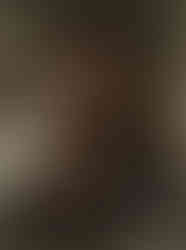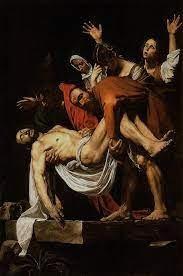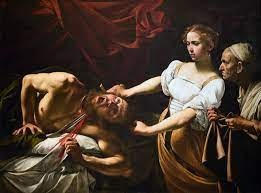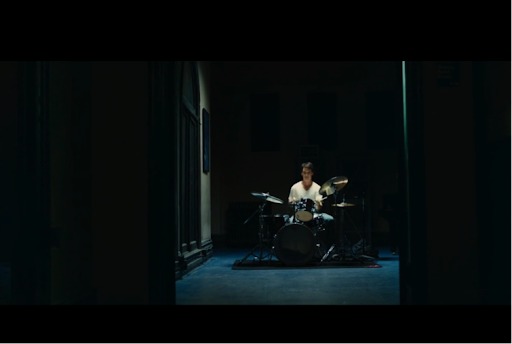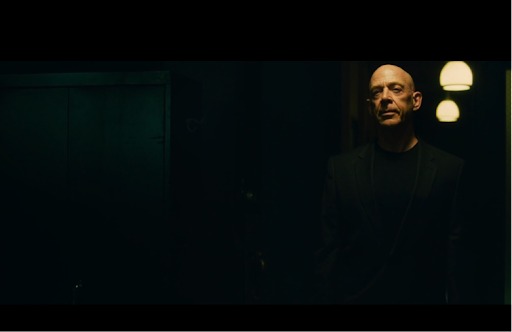Tenebrism in Art and Film - The Polarity and the Dependency
- Arya Kastwar
- Sep 16, 2022
- 7 min read
Updated: Oct 21, 2022
Light and dark, two polar elements, hold a significant connotation in everything man can possibly perceive, all within its spectrum. Love and hate, victory and defeat, pleasure and pain, hope and despair- every emotion, every notion, every tone and every belief has a diametric equivalent, together reflecting black and white.
How the very concept of light and shadow together toys with one's life, through nature, through nurture, through morale and through ethics, is often invisible to the eye; and yet, so transparent and vivid an expression, lucid enough to draw the gravity of the subject, losing nothing in translation. The kinship between light and shadow for ages has been, and still is indulged in to hold intact the drama and chaos in art, film, and literature. This very art of manipulating the extrema of the spectrum to fit one’s art is, in simpler terms, called Tenebrism.
In this blog, we analyse and break down the nuanced details of tenebrism and the weight it holds in cinema.

In film, to draw articulately the reality of life and all of its elements through a mere screen, the tiniest and seemingly the most insignificant detail is also capable of diluting the essence of the subject substantially. Hence, narration, movement, and of course, lighting, add up to few of the most integral factors of filmmaking. We will delve deeper into how tenebrism is used in cinema after learning a little more about its roots.
Tenebrism, descending from the Italian word Tenebroso, which quite literally translates to “dark/gloomy”, is a style of painting which integrates the utter and violent contrast of light and dark, and makes a whole piece of art out of it, always keeping the dark as the ascendent feature.
Caravaggio’s Genius
The founding father of Tenebrism, Michelangelo Merisi de Caravaggio, an Italian painter, understood perfectly the spectrum of light and dark, and masterfully used both the elements together to add a layer of depth and chaos in his art. Best known for his paintings like Boy Bitten by a Lizard (1594), Judith Beheading Holofernes (1599), The Calling of Saint Matthew (1600), and The Entombment of Christ (1603), not only did Caravaggio draw an unquestionable line between light and dark but also flirted with the idea of the two touching but never merging.
“Caravaggio’s images freeze time but also seem to hover on the brink of their own disappearance. Faces are brightly illuminated. Details emerge from darkness with such uncanny clarity that they might be hallucinations. Yet always the shadows encroach, the pools of blackness that threaten to obliterate all.” - Andrew Graham-Dixon, British Art Historian
However, before plunging deeper into the subtleties of tenebrism, it is essential we understand the difference between tenebrism and chiaroscuro, since these words are often used interchangeably, and incorrectly.
Tenebrism ≠ Chiaroscuro
Tenebrism itself is a subtype of chiaroscuro. However, despite the theories seemingly having distinctions small enough to go unnoticed, the key difference lies in the shadows, which makes a significant impact on the subject and setting. Chiaroscuro quite literally translates to “light-dark” (chiaro meaning light, while scuro meaning dark). Unlike the tenebristic blackness, chiaroscuro holds some light in the shadows, adding fairly pronounced volume and depth to the composition that are refined but subtle.
Tenebrism, on the other hand, uses brutal contrast with not the slightest hint of light in the shadows. The difference either of these concepts brings to a composition is known as the “Spotlight effect”.
The irony, interestingly, is that tenebrism comes from Caravaggio, who himself was a deeply disturbed man, like many other prodigious artists; and by all accounts, a complete criminal. The romantic stereotype of an eccentric and frenzied artist who dies before his time has, of course, played its fair part in sensationalising his art more than it is worth; but regardless, Caravaggio was unarguably a master of light and shadow, and tenebrism, used in art in the age of Baroque, continues to be a fantastic technique now used in film in the neoteric world.



Tenebrism in Cinema
The play of light, precisely tenebrism in the context of cinematography, is used to yield a three dimensional reflection of the objects and characters in the shot projected on a two dimensional surface, which contributes greatly in retaining the gravity of the matter, and the depth of the emotion elicited.
The high-contrast lighting technique earned its spotlight in the early years of the twentieth century, primarily in Film Noirs and German Expressionism films. Of course, circa World War II and The Great Depression, among myriad of other economic and moral crises around the world, tenebrism fit perfectly in materialising in films the reflection of the state of the world they absorbed their stories from.
The manipulation of light and dark helps terrifically in building suspense; which is why, more often it is used in horror and thriller genres. Nonetheless, if the strings are pulled just enough, genre is no criterion for it to bring any scene to utter reality.

In Greta Gerwig’s Little Women (2019), Amy burns Jo's manuscript, “the loving work of several years”, as Alcott puts it, out of sheer spite. Being the youngest, of course, she is self-absorbed, spoiled, and entitled. Having a cold, being denied to go to the theatre with her sisters, Amy’s pride is hurt, like children’s pride often is, when reasoning fails to support their interests and intentions.
The play of light and shadow in this scene ever seamlessly turns the audience’s focus to Amy’s face alone, behind the burning manuscript. The unforgiving polarity between the two elements brilliantly reflects conviction in Amy’s eyes, that she truly, with all her heart wants to hurt Jo.
The manipulation of light and shadow in this scene establishes the fact that Amy is genuinely un-remorseful, and is not, now or ever, contemplating her action. It echoes nothing but absolute resolution. Amid the fire, the shot manages to bring unadulterated focus on Amy’s eyes, which seem ruthless and at peace at the same time, of course, having retaliated, almost content, even.

In Ari Aster’s Hereditary (2018), Annie, who had been trying to stay collected after losing Charlie in an accident, finally breaks down when Peter speaks indecently to her. In this scene, the attention is masterfully diverted towards the sheer agony and aggression on Annie’s face. Despite the overall dull lighting, Annie’s unmistakable impression overshadowing the utter darkness in the background leaves a striking afterimage with the audience after the shot cuts.
The hyperbolised chiaroscuro further penetrates the layers of one’s subconscious, yielding an eerie familiarity of a frenzied and deeply disturbed mother with a child lost and another she cannot keep protected in her wings anymore. The dramatic polarity of lighting forces the audience to look unblinkingly at nothing but Annie while she delivers her monologue, making one feel involved, vulnerable, exposed, even.
Having mentioned Hereditary for its brilliant tenebrism, we feel a sense of obligation to remind ourselves how Ari Aster not only toys with light and shadow to capture the horrors of his concepts to the essence, and ingrain absurd, irrational fear in the audience, but also chooses to sometimes forgo entirely any kind of chiaroscuro at all whatsoever, still rendering an equally discomforting and unnerving performance- much like in Midsommar (2019).
Whiplash, 2014
Damien Chazelle’s Whiplash (2014) opens in a practice room. Zooming in on the room from the length of the corridor, the shadows, with a subtle green tone, makes the corridor seem imposing and scary, intrusive, even; while the light at the end of the corridor bears a contrasting blue undertone, diverting the audience’s attention wholly toward itself.
A huge element contributing to the genius of this scene is also the colour of the top Andrew and Fletcher are wearing. As insignificant as it may seem, it feeds into the audience’s subconscious a preempted impression of both the protagonists. Fletcher, in his black top, blends into the dark corridor, which makes him seem more threatening. Andrew, on the other hand, in his white top, serves a complete, more transparent image of himself, making him more likeable than Fletcher.
The theatricality of Whiplash beautifully and consistently switches between cold detachment and warm intimacy, a juxtaposition proving itself to be utterly compelling.

Christopher Nolan’s, The Prestige (2006), in its entirety employs the concept of low-key lighting. It tells, after all, a dark tale of two rival magicians. However, in impressive detail, the story advances from lighter, more subtle contrast to darker, more violent contrast of shadow and light, running parallel to the plot of the story as it gets more intense.
In this scene, the deep shadow in the background, and the contrasting light falling on Angier’s face alone shows his irredeemable defeat. This polarity retains and captures to the core what the scene is portraying.
The audience, oblivious to how light and dark play tricks on their minds, subconsciously feel the dark pervading their senses, feeling uneasy, almost visceral throughout the length of the film. Even more so, as the suspense, and the collateral tenebrism build. Of course, Christopher Nolan being the gifted filmmaker that he is, the lighting has been devised not only in this scene but from the very beginning to fit perfectly the plot and aesthetics of the widely acclaimed film.
The Essence of Tenebrism
We know now why from the period of renaissance all the way to the 21st century, the polarity of light and shadow continues to be used as extensively as ever by filmmakers. To understand its intricacies- to raise the contrast to a little over an undertone, or to lower it right before it exaggerates into an overkill takes profound skill and expertise in reading the essence of the scene.
To break it down simply, correct use of tenebrism in film
Can elicit deep emotions
Can make the movie more immersive and impactful
With a fitting performance can create a cathartic experience for the audience
Tout ensemble, lighting, as a wider concept plays with the psyche in ways we do not realise. The depth tenebrism creates in a scene is the reason we feel wholly transfixed in the moment. Keeping you completely engrossed in the film, it is capable of stirring deep emotion in its immediacy, forcing you to give in to or conquer your fanciful impulses, question your morality and of those around you. The audience, although oblivious to its impact, fall prey to the technique, thoroughly enjoying every part of a film well directed!
